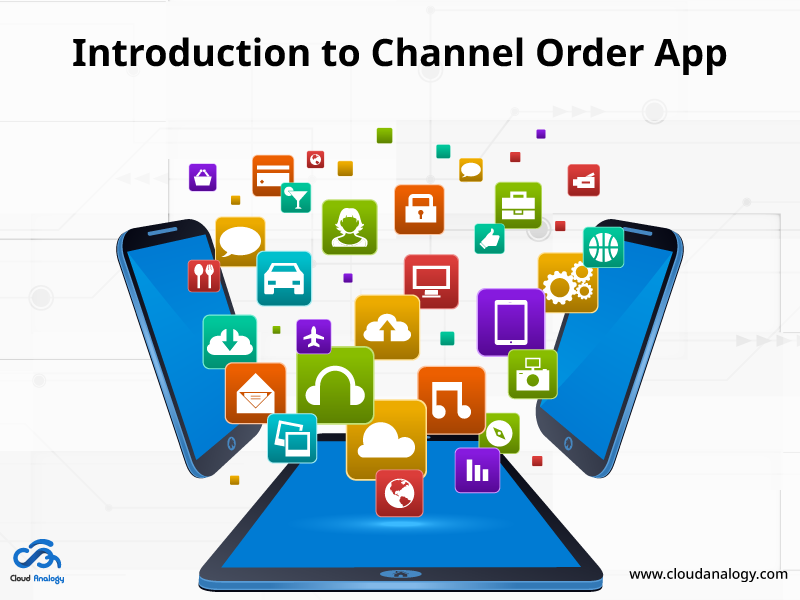Salesforce AppExchange is widely known as the # 1 marketplace for business applications and has more than 5,000 technology solutions ranging from apps, components, pre-built flows, industry-specific Bolt templates, data and more. It brings together consulting partner services and technology solutions in one place, empowering all the Salesforce consulting partners to use data for driving customer success and boosting revenue like never before.
As an AppExchange partner, you have created an application, launched it, and refined your marketing strategy. The customers starts to notice your application. Orders are coming in. Now you need a powerful tool to manage all of these orders effectively. An interactive tool that reports sales easily and quickly. So, here is a question, what it can be?
Channel Order App (COA)
For this purpose, Salesforce has introduced a Channel Order App (COA) that enables Salesforce partners to create, manage, and submit service orders directly to Salesforce. The application is available for free on Salesforce AppExchange to eligible ISVForce, OEM (Original Equipment Manufacturer), VAR (value added reseller), and Reseller partners. The COA is available in both Salesforce Classic and Salesforce Lightning Experience editions.
You can utilize the COA to craft, send, and track all your orders on AppExchange. With COA, the app publisher can see your orders placed and you can see what they’re charging you for.
Managing orders with COA is easy and effective, but it requires some preparations. You should be well prepared to answer COA’s questions about your customers, the products you sell, pricing, and other terms in your partnership agreement.
In your journey to become an AppExchange partner, you have already decided which products to build and how to deliver them. Your Salesforce partnership agreement documents include all these details.
So, what is the need for all these preparations? This is for accuracy and efficiency. When you place an order, Salesforce processes it faster, quickly integrates with customers, and generates invoices correctly. So be prepared to share all the interesting details and you are all set to become an order management superstar.
Fundamentals of Channel Order Application
Being an Operations Analyst, your business trusts you to place customer orders to the Salesforce Partner Operations team. When customers buy products or request changes (such as adding users or renewing contracts), you submit and orders to Salesforce. This way, you stay up-to-date with your revenue-sharing agreement, and COA is the best tool for doing that. Publishers review your COA orders, determine how you agree to share revenue with us, and generate your invoice.
What happens if you submit an order to the COA successfully? That depends on your partner status: ISVforce or Original Equipment Manufacturer (OEM).
Salesforce ISVforce partners usually sell applications that depend on the Salesforce Sales Cloud or Salesforce Service Cloud and improve the functionality of the cloud. ISVforce partners can only sell to existing Salesforce customers.
OEM partners sell a full application that does not depend on the Sales Cloud or Service Cloud, and they sell to both existing and new Salesforce customers. For new customers, you provide an org with your installed applications.
If you are a Salesforce ISVforce partner, orders are the triggers for billing and revenue sharing. If you are an OEM partner, orders will also set provisioning in motion. OEMs that sell to new customers must provide Embedded Edition license to all your app’s users. The license determines who and for how long your product can be used. The embedded license gives your customers access to the Salesforce platform on which your application is built on.
Key Features of COA
- Submit initial orders for new customers.
- Submit add-on, upgrade, renewal, reduction, and cancel orders for existing customers.
- Edit, recall, and clone orders that you’ve submitted.
- Delete order drafts.
- View details about your customers like order history.
Main Objects in the Channel Order App
In order to place an order with the help of COA, you must be familiar with the following objects:
• Contract Terms: This object determines how you can sell products to customers according to your contract with Salesforce.com.
• Product Catalog: This object defines the list of products that you can sell under your contact and related revenue-sharing details.
• Service Order and Service Order Detail: These two objects are used to submit the details of your orders to Salesforce.com. The ordering application collects the required data and automatically fills in these objects.
• Clients: This custom object in the channel order application package stores the name, organization ID, and address information for each of your customers. The Service Order has a lookup to this object to get customer information about your order.
How to Install the Channel Order App?
Before getting started, confirm that you have admin access to the org you will be using to submit and track production orders.
Step 1: Open the Application list for the Channel Order App at the AppExchange here.
If you are not logged in, sign-in to AppExchange using the credentials where you want to install the application.
Step 2: On the Salesforce.com Channel Order Application page, click Download Now.
Step 3: Click Install in production.
Step 4: On the Installation Summary page, make sure you install the application in the correct org. Review the Terms of Use and conditions and Select “I have read and agree to the Terms of Use and conditions” Click confirm and install.
Step 5: Fill your Salesforce administrative credentials again and click Login.
Step 6: Before the installation begins, the installer displays details about how to install the package. Click Continue.
Step 7: In the “Allow third party access” pop-up, review the list of websites and select “Yes, grant access to these third-party websites.” Click Continue.
Step 8: Approve Package API Access and the installer will list the permissions required by the Channel Order application. Review the page and approve the required access by clicking Next.
Step 9: Select the security level to determine which profile has access to the application. Select Grant access to admins only and click Next.
Step 10: Click Install to start the installation.
Step 11: Installation can take two to three minutes. If the complete installation page does not appear, enter the Installed Package under setup in the Quick Search box, and then select Installed Package. Search for SFDC channel orders. If the package is not available, refresh the page every minute until you see the package.
Conclusion
In a nutshell, COA is an essential tool to create, submit, and track your customer orders from AppExchange and a required process for all partner app sales.
We like to mention the revolutionary product — Pin Tags — that was released on the Salesforce AppExchange Platform.
Using Pin Tags would be a great way for you to describe and organize your Salesforce records and data in a personalized way. Our Pin Tags Application offers various rich and out-of-the-box features and functionalities. In case of queries and questions, please feel free to get in touch with us here.

Akshay Dhiman
Chief Technical Officer (CTO)
“Akshay Dhiman, the CTO of Cloud Analogy, has been a standout and successful Salesforce Platform Developer for years. He has a rich experience in Salesforce Integration, JavaScript, APEX, VisualForce, Force.com Sites, Batch Processing, Lightning, PHP, C++, Java, NodeJs, ReactJs, Angular 8, GraphQL, React Native, Web Technology, and jQuery. Known for his problem-solving and debugging skills, Akshay is an out-of-the-box thinker and his capability to understand the business context and translate it into a working model is par excellence. Akshay would not only translate his thoughts into reality but would also bring in his own perspective that is always a tremendous value add. Akshay has the knack of taking challenges head on, equipped with In-depth industry knowledge, Resourcefulness and uncanny nag to build relationship with anyone in shortest time possible. Not only does he possesses fantastic technical depth and awareness but Akshay also complements them with a profound understanding of business functionalities, tools, and methodologies. He has the rare combination of skills and talent that one looks for in Salesforce – attention to detail and the drive for innovation.”



